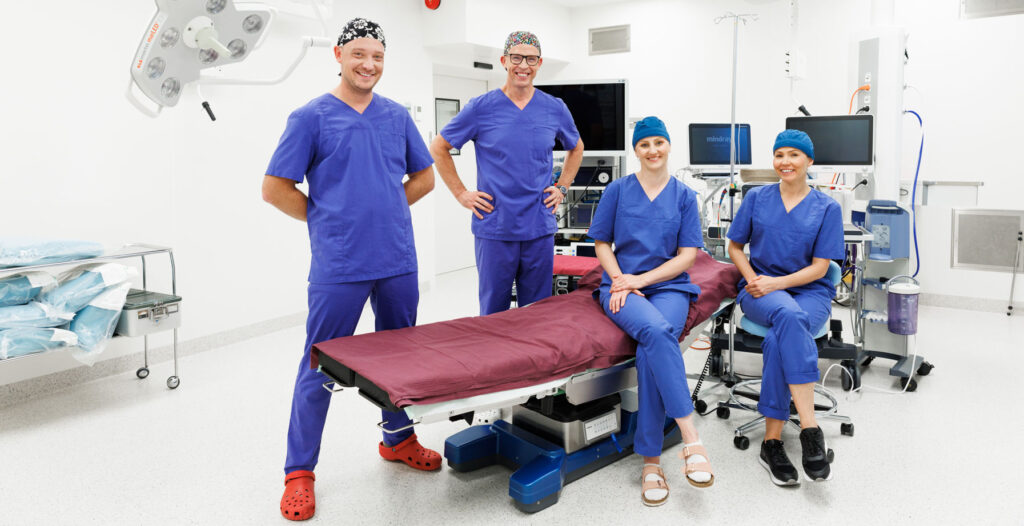Laparoscopic fundoplication is a surgery used to treat gastroesophageal reflux disease (GERD). GERD is a condition where the reflux of acid from the stomach into the esophagus causes heartburn, tooth decay, or a chronic cough. This can be caused by a weakened lower esophageal sphincter that is unable to prevent stomach contents from moving into the esophagus. Often, sphincter weakness is accompanied by hiatal hernia.
Heartburn is a common problem that is usually treated with stomach acid suppressants such as omeprazole or pantoprazole. All symptoms do not respond to medical treatment, and in such cases, surgical treatment – laparoscopic fundoplication – is recommended.
The aim of the operation is to restore the mechanism of the valve between the stomach and the esophagus to prevent the backflow of stomach contents into the esophagus. The operation is always performed laparoscopically and under general anesthesia. The necessary instruments are introduced into the abdominal cavity through small wounds less than 10 mm in size.
Minimal surgical trauma ensures quick recovery after surgery. Most patients can go home the evening of the surgery.
The procedure includes the following steps:
Anesthesia
The procedure is performed under general anesthesia. This means that the patient is asleep and does not feel pain.
Incisions
The surgeon makes 4-5 small incisions in the abdomen, through which laparoscopic instruments and a camera are introduced into the abdominal cavity.
Performing fundoplication
The surgeon frees the area around the lower esophagus and the upper part of the stomach from the adhesions. An esophageal cuff is then formed from the upper part of the stomach to restore the valve mechanism between the stomach and esophagus to prevent stomach contents from flowing back into the esophagus. If there is a hiatal hernia, it is always repaired as well.
Closing the incisions
After the procedure, the surgeon closes the incisions using absorbable intradermal sutures.
The decision of surgical treatment is made considering the nature and intensity of the patient’s complaints and their impact on the quality of life. In order to choose the right treatment strategy, examinations such as gastroscopy or computed tomography may be necessary. A thorough consultation always precedes the decision of surgical treatment.
